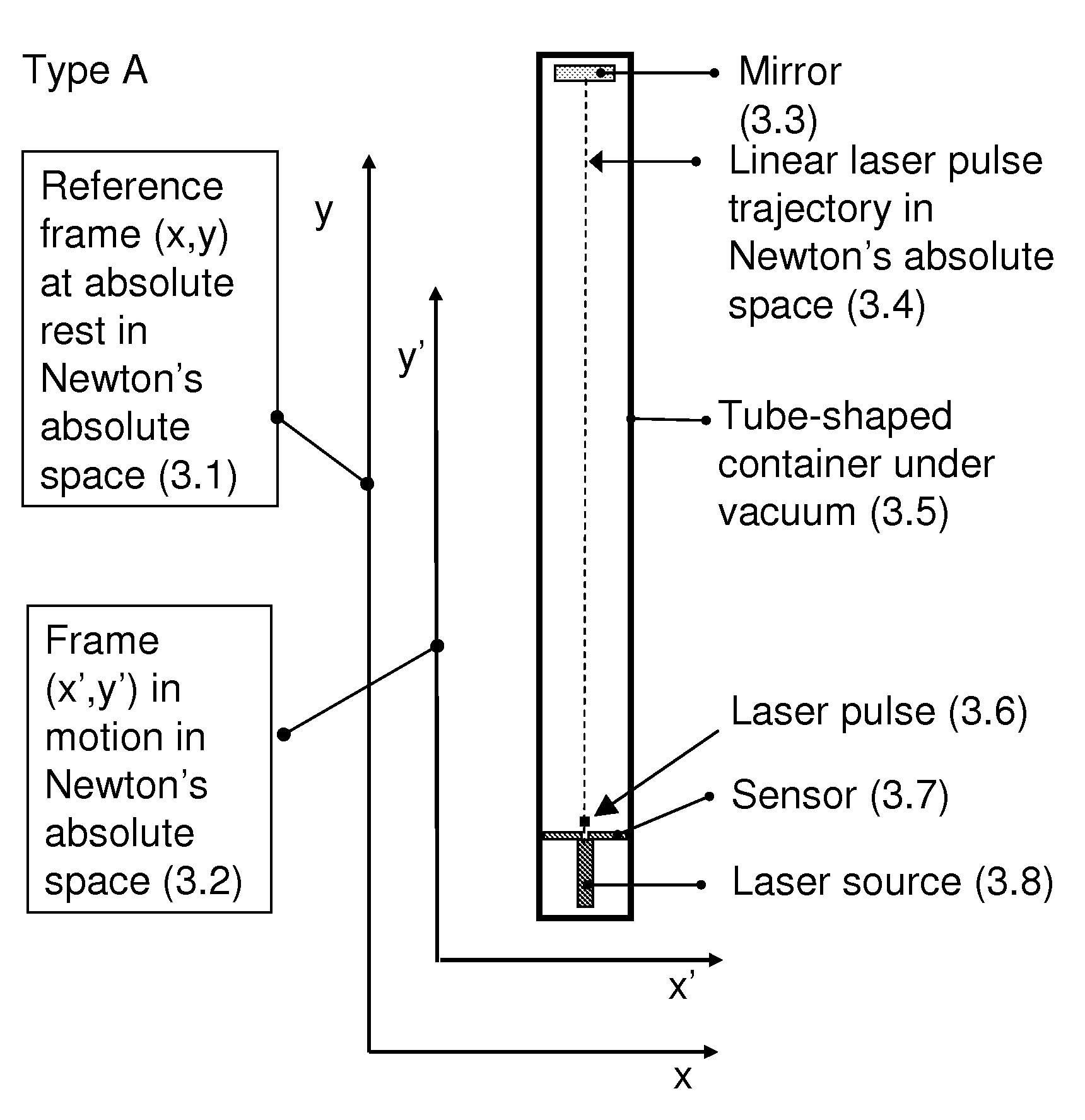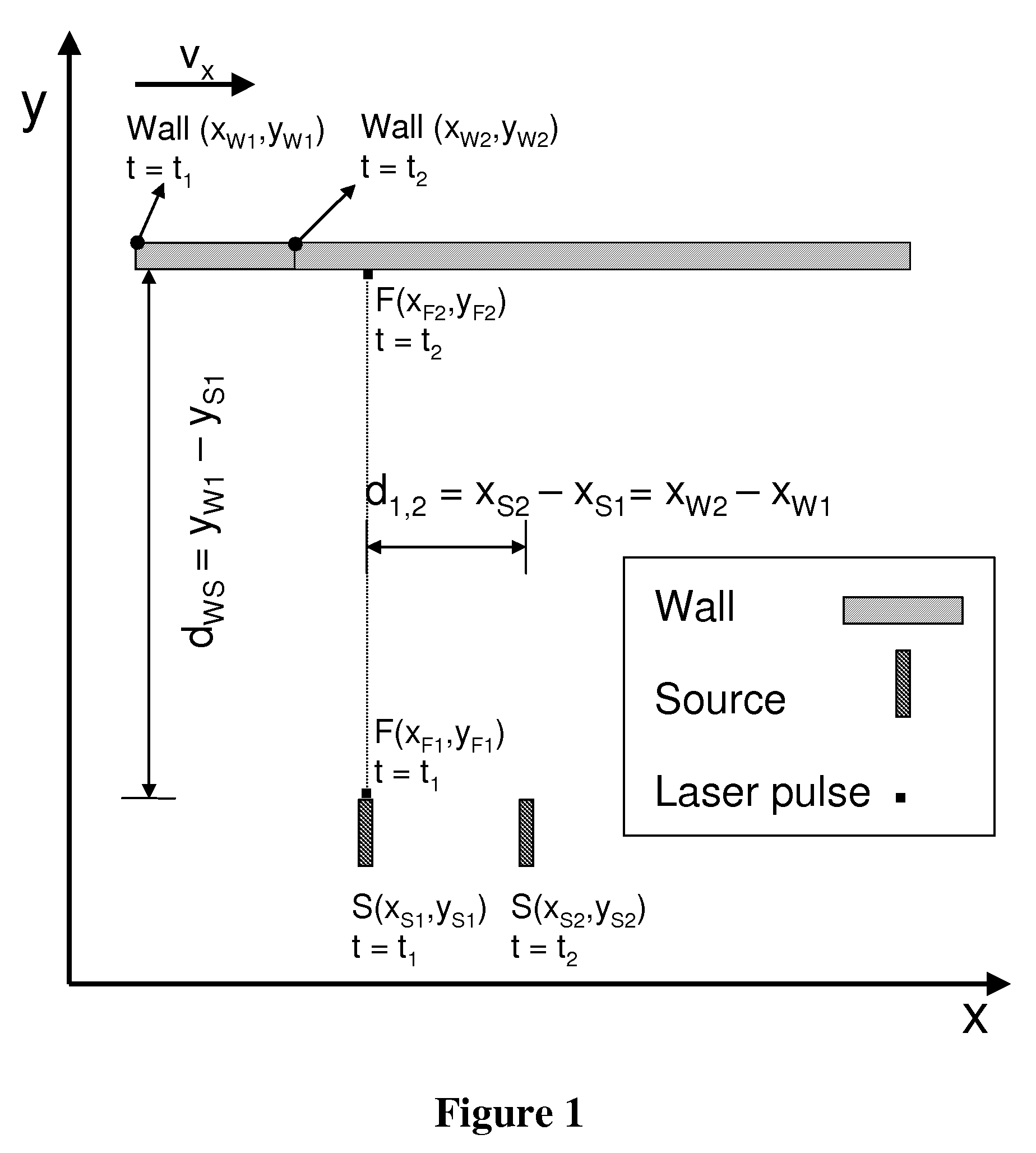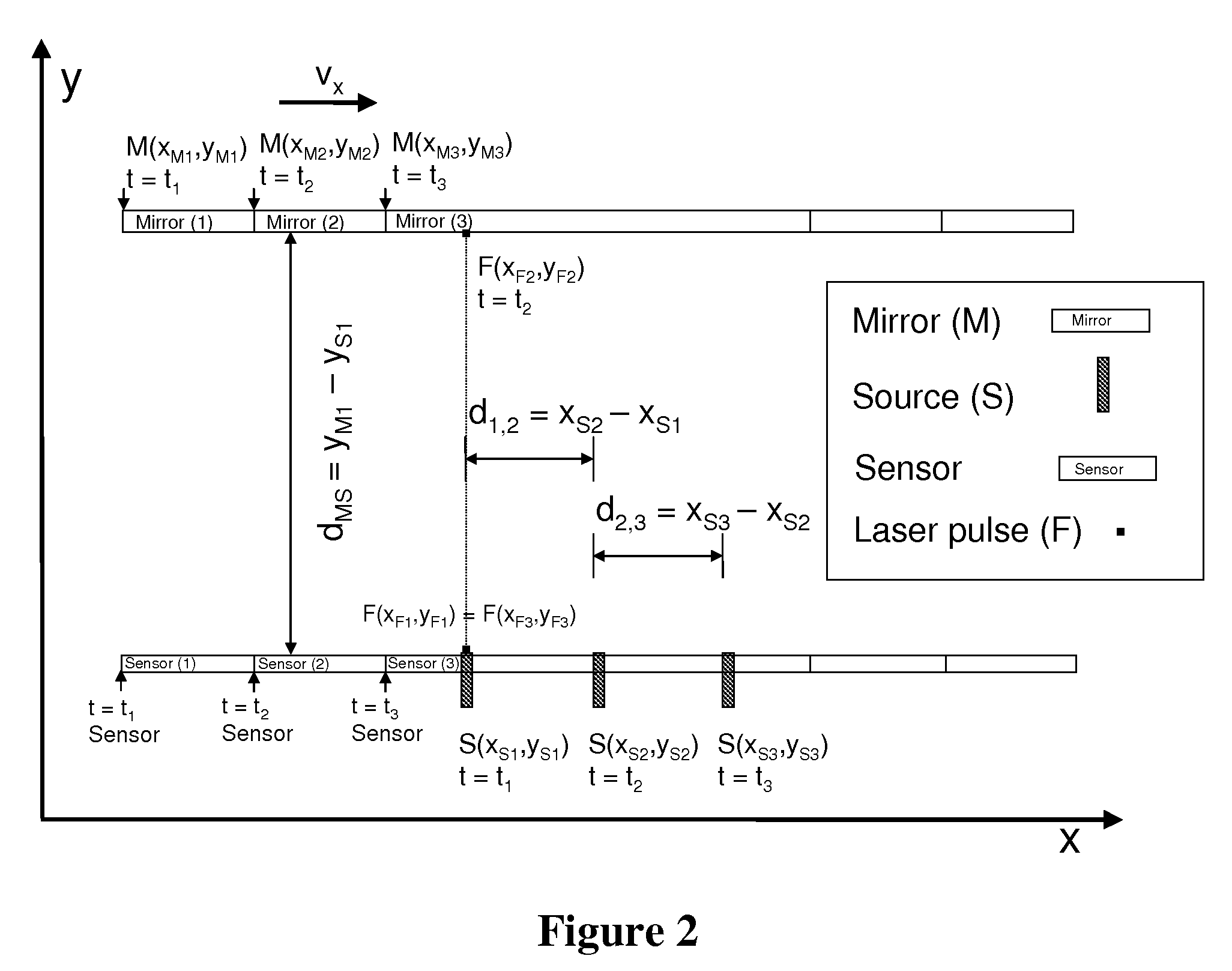Apparatus to measure absolute velocity and acceleration
- Summary
- Abstract
- Description
- Claims
- Application Information
AI Technical Summary
Benefits of technology
Problems solved by technology
Method used
Image
Examples
case 2
[0037]In FIG. 2, a set-up is illustrated which is only a modification of the set-up as presented in the thought experiment in FIG. 1 and which comprises a mirror in order to reflect the laser pulse while doubling the laser pulse's travelling distance. With such a set-up and having a distance between the laser source and the mirror of 100 m the travelling distance would be in total 200 m (towards the mirror and after reflection back to the sensor) and the corresponding travelling time would be 6,672 10−7 sec. When considering a real experiment on earth with a set-up being based upon FIG. 2 it should be evident to anyone that the set-up is NOT at rest but travels along with our planet through space at a tremendous mean velocity of about 30000 m / sec in the earth's orbit around the sun (while excluding for now the likely separate velocity of our galaxy which should be added then) ! It is thus easy to calculate as a first estimate that:[0038]case 1) when the set-up would be aligned in th...
experiment b
[0179 is performed while:[0180]vx=vx, so now the structure actually is travelling in the x-direction[0181]the observer has programmed the system to fire exactly the laser pulse when XS1=XOBS [0182]the observer evaluates the trajectory of the laser pulse, still from her / his position XOBS
[0183]Since, according to the laws in physics, the source has no effect at all on the laser pulse with respect to velocity, the laser pulse does not inherit the vx component from the laser source and thus travels exactly along the same trajectory as in the first experiment and at the speed of light. So again, the laser pulse travels from the position F(XF1,YF1) along the line y=XOBS towards the position F(XF2,YF2). Again XOBS=XS1=XF1=XF2. The laser pulse needs exactly the same time difference At to travel the distance d from F(XF1,YF1) to F(XF2,YF2). The same value of the speed of light is thus obtained by dividing the distance d by the time Δt.
[0184]Experiment C: the observer decide to perform a thi...
experiment d
[0185] the observer decides to repeat the second experiment B in exactly the same way but the only difference is that the observer's position is switched to the position 1 on top of the rigid structure (FIG. 15). So, now the observer travels along with the experimental structure to see the effect. The observer is clearly aware of the fact that the fourth experiment is programmed in exactly the same way as the second experiment and that nothing was changed with respect to the experimental parameters. Therefore experiment 4 is really a reproduction of experiment 2 and only the position of the observer has changed. Of course the observer's mind is perfectly sure that an observer's position can not influence in any way the outcome of an experiment ! And since in physics a completely reproduced experiment always delivers the same result, the observer is really sure that the fourth experiment must reproduce exactly the same result as obtained within the experimental reality within the sec...
PUM
 Login to View More
Login to View More Abstract
Description
Claims
Application Information
 Login to View More
Login to View More - R&D
- Intellectual Property
- Life Sciences
- Materials
- Tech Scout
- Unparalleled Data Quality
- Higher Quality Content
- 60% Fewer Hallucinations
Browse by: Latest US Patents, China's latest patents, Technical Efficacy Thesaurus, Application Domain, Technology Topic, Popular Technical Reports.
© 2025 PatSnap. All rights reserved.Legal|Privacy policy|Modern Slavery Act Transparency Statement|Sitemap|About US| Contact US: help@patsnap.com



